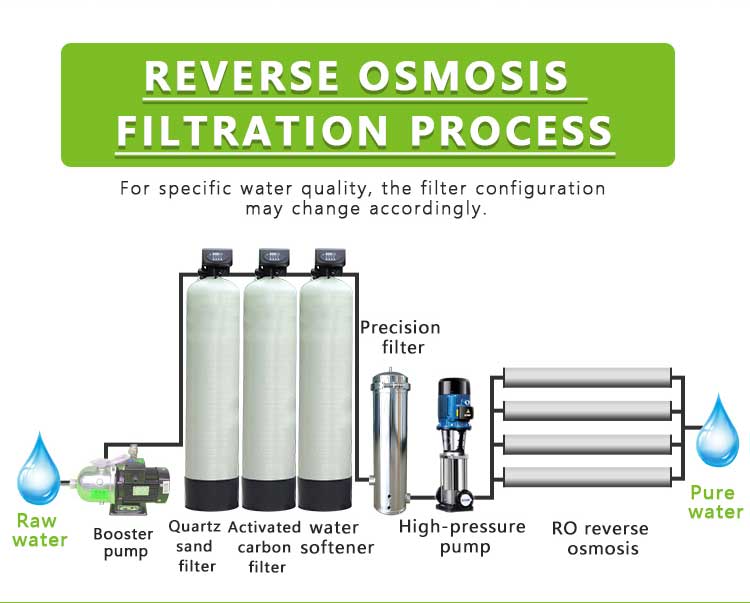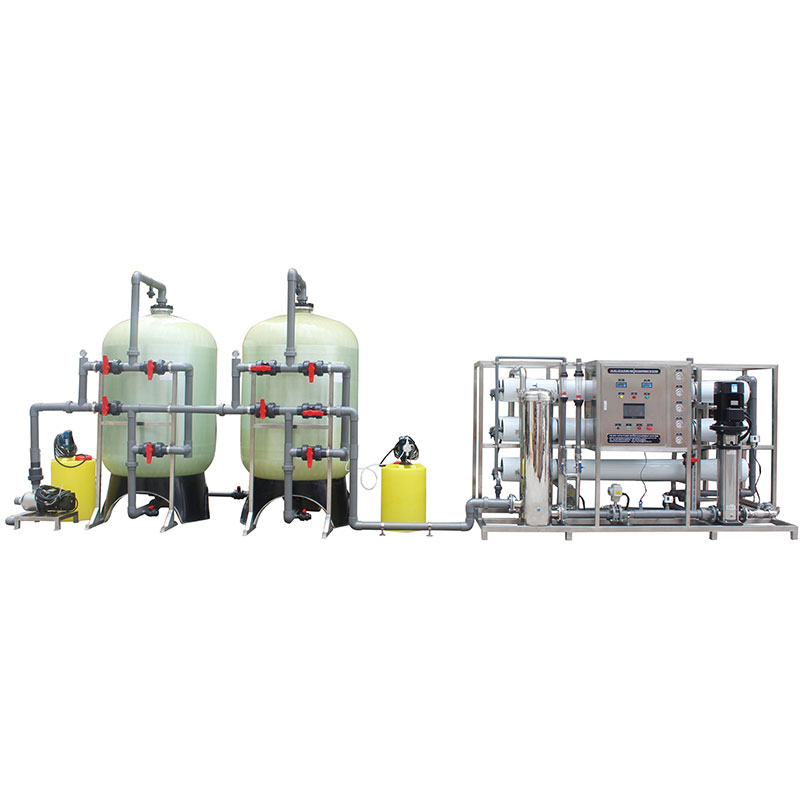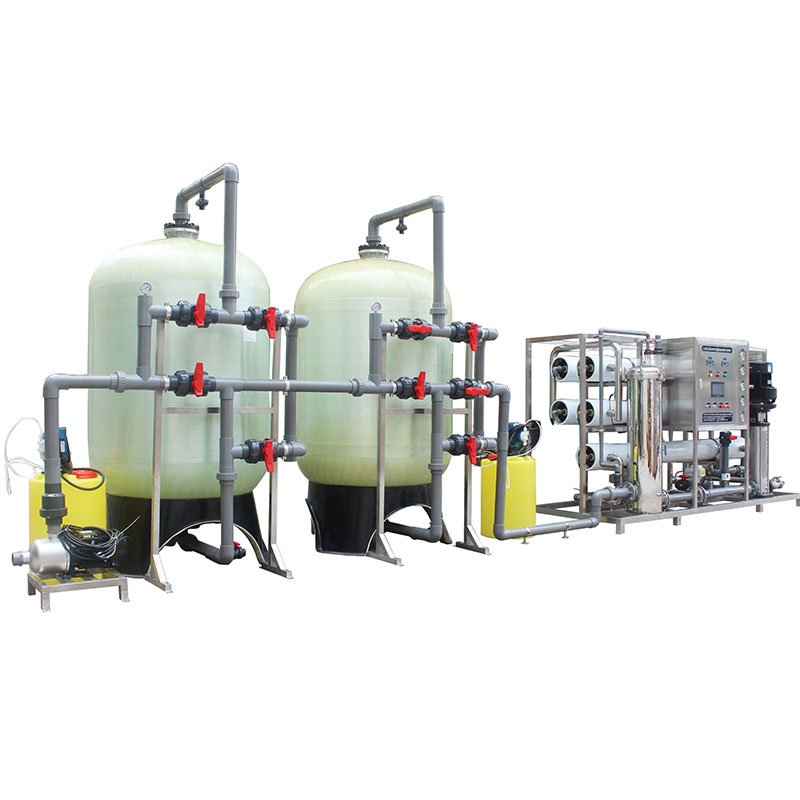How do water treatment plants filter fresh water?
As water resources become increasingly scarce around the world, water treatment plants are becoming increasingly important. These facilities not only purify polluted water sources into drinkable fresh water, but also play a key role in protecting public health and the environment.
So how do water treatment plants filter water from various sources into clean, drinkable fresh water? This article will take a deep dive into the operation process, technical applications and scientific principles behind water treatment plants.

What is the workflow of a water treatment plant?
The workflow of a water treatment plant is generally divided into the following main stages: pretreatment, primary treatment, secondary treatment and tertiary treatment. Each stage has its specific goals and technical means.
1. Pretreatment:
Pretreatment is the first step in water treatment. Its main purpose is to remove large particles and suspended solids from the water to avoid damage and blockage of subsequent treatment equipment. Pretreatment usually includes the following steps:
● Grid and screen filtration: Use grids and screens to remove large particles such as large pieces of garbage, leaves, plastic bags, etc.
● Grit chamber: Use grit chambers to remove larger inorganic particles such as sand and gravel.
● Pre-oxidation: By adding oxidants (such as chlorine or ozone), organic matter and metal ions are initially oxidized to control odor and prevent the reproduction of microorganisms.
2. Primary treatment:
The main purpose of primary treatment is to remove suspended solids and some organic matter in water. Common methods include:
● Coagulation and flocculation: Add coagulants (such as alum or polyaluminium chloride) to water to condense fine suspended matter into larger flocculent particles, which are then further aggregated by flocculants (such as polyacrylamide).
● Sedimentation: The solid particles formed by flocculation are separated from the water by gravity sedimentation to form sludge that is deposited at the bottom of the sedimentation tank.
3. Secondary treatment:
Secondary treatment mainly targets dissolved organic matter and fine suspended matter, and further purifies water quality through biological treatment and physical and chemical treatment methods:
● Biological treatment: Organic pollutants are removed by microbial metabolism. Common biological treatment methods include activated sludge method, trickling bed method and sequencing batch reactor (SBR). The activated sludge method uses aerobic microorganisms to decompose organic matter, generate carbon dioxide and water, and form activated sludge at the same time.
● Filtration: Further remove residual suspended matter and microorganisms through sand filters or carbon filters. Sand filters use the filtration effect of sand layers to remove suspended matter, and carbon filters use the adsorption characteristics of activated carbon to remove organic matter and odor.
4. Tertiary treatment:
Tertiary treatment is the final stage of water treatment. The main goal is to remove specific pollutants such as nitrogen, phosphorus, heavy metals and micropollutants, and disinfect to ensure water quality safety:
● Advanced oxidation: Use oxidants such as ozone, ultraviolet light or hydrogen peroxide to further decompose difficult-to-degrade organic matter and micropollutants.
● Denitrification and phosphorus removal: Remove nitrogen and phosphorus compounds from water through chemical precipitation or biological denitrification and phosphorus removal technology to prevent eutrophication of water bodies.
● Disinfection: Use chlorine, chlorine dioxide, ozone or ultraviolet light to disinfect water, kill pathogenic microorganisms, and ensure that the microbial indicators of the effluent meet the drinking water standards.

Application of modern water treatment technology
In addition to traditional water treatment methods, modern water treatment plants also widely use some advanced technologies to improve treatment efficiency and water quality:
1. Reverse osmosis (RO):
Reverse osmosis technology uses semi-permeable membranes to remove dissolved salts, heavy metals, organic matter and microorganisms from water. The RO system passes water through a membrane with extremely small pores under high pressure, allowing only water molecules to pass through and intercepting most pollutants. Reverse osmosis technology is widely used in seawater desalination and the preparation of high-purity water.
2. Ultrafiltration (UF) and Nanofiltration (NF):
Ultrafiltration and nanofiltration technologies use membranes with different pore sizes to filter suspended matter, colloids, bacteria and some soluble organic matter in water. The pore size of ultrafiltration membranes is generally between 0.01 and 0.1 microns, while the pore size of nanofiltration membranes is smaller, which can intercept organic matter with smaller molecular weight and multivalent ions. Ultrafiltration and nanofiltration are often used for pretreatment or as a pretreatment for reverse osmosis.
3. Membrane bioreactor (MBR)
MBR combines the advantages of biological treatment and membrane filtration. On the basis of the activated sludge method, ultrafiltration or microfiltration membranes are added to further purify the biologically treated water. The MBR system has the advantages of small footprint, high effluent quality, and low sludge production, and is widely used in small and medium-sized water treatment plants and recycled water projects.
4. Electrochemical water treatment:
Electrochemical water treatment technology uses electrochemical reactions to remove pollutants from water, such as electrocoagulation, electrooxidation, and electrosorption. This technology has the advantages of high treatment efficiency, low energy consumption, and low chemical dosage. It is suitable for treating high-concentration organic wastewater and wastewater containing heavy metals.

Management and operation of water treatment plants
Efficient water treatment not only depends on advanced technology and equipment, but also requires scientific management and operation:
1. Automation and intelligence:
Modern water treatment plants widely use automated control systems and intelligent management platforms to achieve real-time monitoring and regulation of the water treatment process. Through sensors and online analytical instruments, water quality data is collected, treatment parameters are optimized, and treatment efficiency and stability are improved.
2. Environmental protection and sustainable development:
During operation, water treatment plants focus on environmental protection and sustainable development, and adopt energy-saving and consumption-reducing technologies to reduce energy consumption and carbon emissions. At the same time, through the resource utilization of sludge and the reuse of wastewater, the environmental load is reduced and the recycling of water resources is realized.
3. Water quality monitoring and guarantee:
In order to ensure that the effluent quality meets the standards, the water treatment plant has established a complete water quality monitoring system to regularly test and evaluate the water quality. Through laboratory analysis and online monitoring, water quality problems are discovered and solved in a timely manner to ensure water supply safety.
Conclusion
Water treatment plants play an irreplaceable role in purifying water resources and ensuring the safety of drinking water. Through multi-stage scientific processes such as pretreatment, primary treatment, secondary treatment and tertiary treatment, combined with modern water treatment technology, water treatment plants are able to purify water from various sources into safe and clean fresh water.




